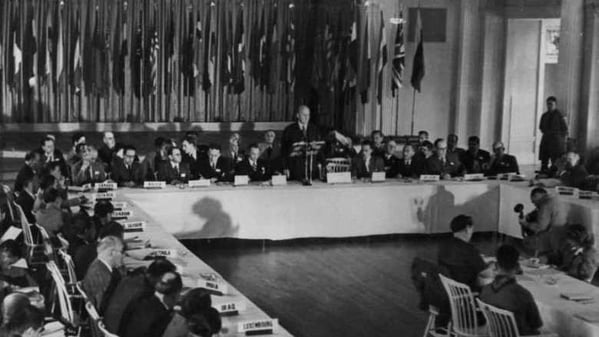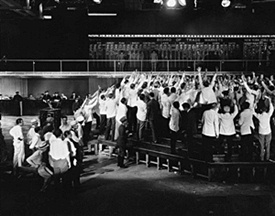Forex market began in the middle ages where currency traded through the international banks.
Although currency trading has a long history dating back to the middle ages, it is the changes that we have seen during the twentieth century which have created the Forex market we see today. During the first half of the twentieth century the British pound was the worlds principal trading currency and was the currency held by many as their main (reserve) currency. As a result, London was also seen as the leading center for foreign exchange. However, the Second World War severely damaged the British economy and so the United States dollar took over as the worlds principle trading and reserve currency and retains that position today. This said, there are now a number of other currencies, principally the Yen and the Euro, which are also seen as reserve currencies.
Since the Second World War there have been a number of events which have proved instrumental in shaping todays Forex market.Until the start of the Second World War, as we said the British Pound Sterling was the World most prominent currency.
At the end of the Second World War the Worlds economy, with the exception of the United States of America, was in disarray. Representatives from the United States of America, Britain and France met at Bretton Woods, New Hampshire with the objective of creating an infrastructure that would allow the rebuilding of the World economy. The result was the Bretton Woods Accord. The Accord decided that the US Dollar would become the World benchmark and all other countries would measure the value of their currencies against it. Part of this agreement was the Gold Standard which fixed the price of Gold at $35 an ounce. All other currencies were pegged to the dollar at a certain rate. This rate was not allowed to fluctuate more than 1% in either direction (higher or lower). If a fluctuation greater than 1% did occur then the relevant central bank had to enter the market and restore the exchange rate to within the accepted band. The Bretton Woods Accord also set in motion the establishment of the International Monetary Fund (IMF) which was designed to provide a stable system for buying and selling currencies and to ensure that currency transactions could take place smoothly and in a timely fashion.
In addition, the aim of the IMF was to create a consultative forum to promote international co-operation and to facilitate the growth of world trade, while at the same time breaking down exchange restrictions which hindered international trade.
The Smithsonian Agreement tried to succeed where Bretton Woods had failed. Rather than give a 1% margin, greater room for manoeuvre was introduced. Not long into this agreement, Europe made its first attempt at breaking free from the Dollar dominated system. In 1972 Europe formed the European Joint Float. Member nations included West Germany, France, Italy, the Netherlands, Belgium and Luxembourg. This agreement was very similar to Bretton Woods but with a larger band for rate fluctuation.

Just as their predecessors had failed, these agreements were flawed and subsequently fell apart. However, this time there was no new agreement to take its place. For the first time since WWII there was a (free float) system in place. The value of each currency is now governed completely by the laws of supply and demand. Large banks, private companies and individual speculators are all active participants in the Forex market.
The next major milestone was the establishment of European Monetary System which effectively came into force in 1979. The European Monetary System got off to something of a shaky start when Britain (one of the principle members of the European Community) decided not to join the system and Italy joined only under special arrangements. Britain did however later agree to participate to a limited degree by joining the exchange mechanism of the European Monetary System in 1990.
The final major development to affect the Forex market was the establishment of the Euro as a single currency for European Union member states in 1998 with eleven of the participating states replacing their national currency with the Euro.







%20-%20MetaTrader%205%20-%20CME%20Micro%20Futures%20-%20Free%20Demo.png?width=346&name=AMP%20Global%20(Europe)%20-%20MetaTrader%205%20-%20CME%20Micro%20Futures%20-%20Free%20Demo.png)

